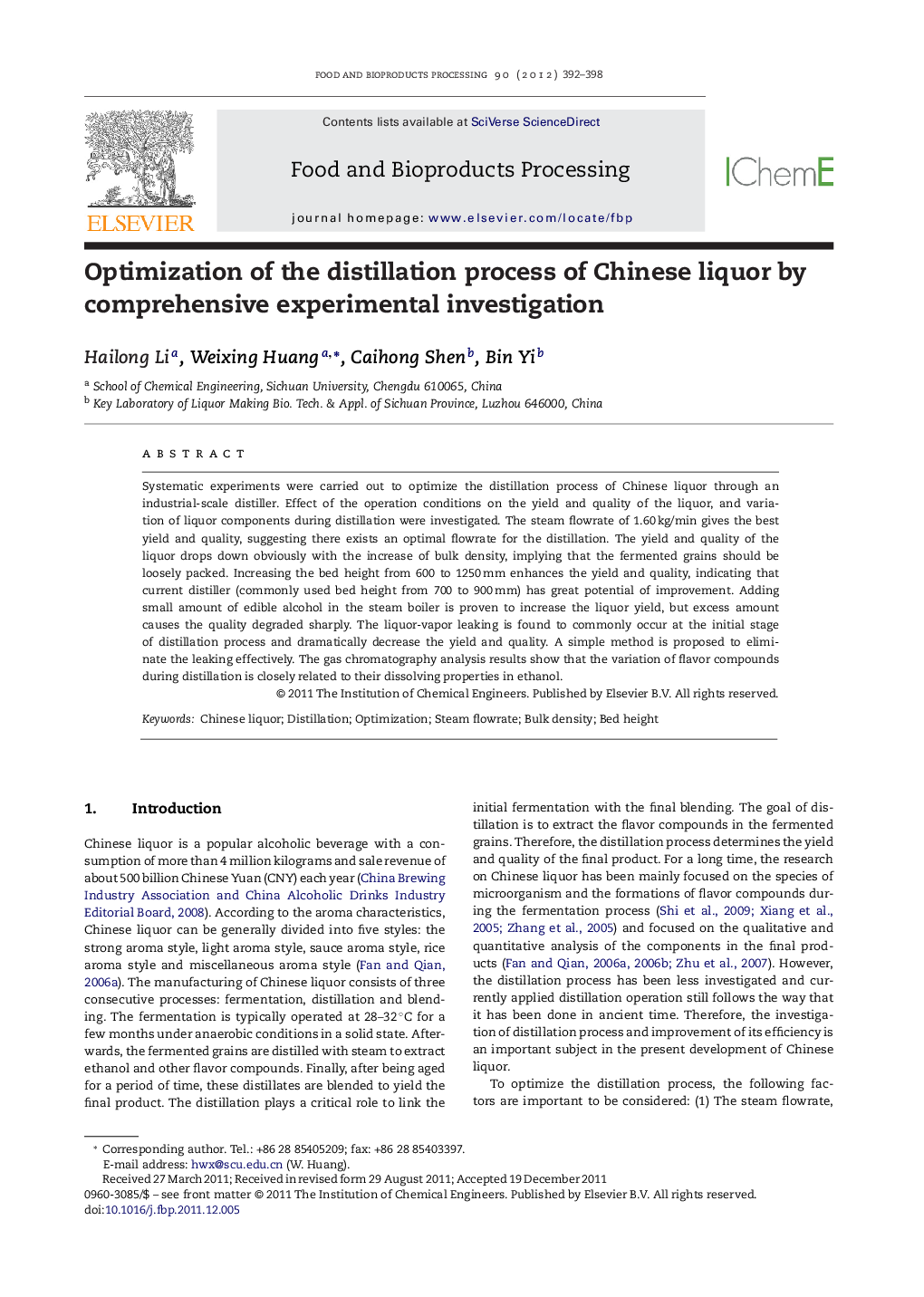| Article ID | Journal | Published Year | Pages | File Type |
|---|---|---|---|---|
| 19053 | Food and Bioproducts Processing | 2012 | 7 Pages |
Systematic experiments were carried out to optimize the distillation process of Chinese liquor through an industrial-scale distiller. Effect of the operation conditions on the yield and quality of the liquor, and variation of liquor components during distillation were investigated. The steam flowrate of 1.60 kg/min gives the best yield and quality, suggesting there exists an optimal flowrate for the distillation. The yield and quality of the liquor drops down obviously with the increase of bulk density, implying that the fermented grains should be loosely packed. Increasing the bed height from 600 to 1250 mm enhances the yield and quality, indicating that current distiller (commonly used bed height from 700 to 900 mm) has great potential of improvement. Adding small amount of edible alcohol in the steam boiler is proven to increase the liquor yield, but excess amount causes the quality degraded sharply. The liquor-vapor leaking is found to commonly occur at the initial stage of distillation process and dramatically decrease the yield and quality. A simple method is proposed to eliminate the leaking effectively. The gas chromatography analysis results show that the variation of flavor compounds during distillation is closely related to their dissolving properties in ethanol.
► An optimal steam flowrate is found to be existed for Chinese liquor distillation. ► Both lower bulk density and higher bed height lead to higher liquor yield and quality. ► Appropriate addition of edible alcohol into steam boiler enhances the liquor yield. ► The liquor-vapor leaking dramatically brings down the yield and quality. ► The main cause for the leaking is found and an effective solution is proposed.
